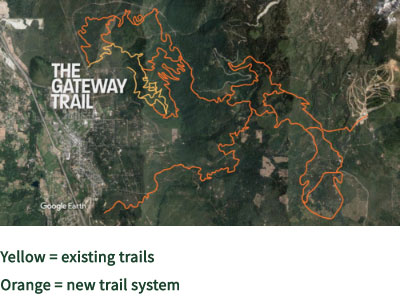Project Overview
One mile from the city center of Mt. Shasta, CA, Gateway will become one of the largest, continuous mountain biking trail networks in Northern California.
One mile from the city center of Mt. Shasta, CA, Gateway will become one of the largest, continuous mountain biking trail networks in Northern California.
This plan ensures that cycling and walking becomes an increasingly viable and attractive transportation option for people who live, work and recreate in Mt. Shasta. A major disconnect currently exists between low-income communities throughout Siskiyou County and opportunities for safe access to outdoor recreation on public lands.
Despite thousands of acres of public lands ideal for potential recreation, access remains limited by inadequate trailheads, poor trail connectivity and linkages, few parking areas, and non-existent signage, maps, or interpretive information. The trail will be easily accessible from most locations throughout the county using public transportation. The project also ensures accessibility and safety for all income levels.


This project will provide over $1 million for local jobs including trail construction, heavy equipment operators, vegetation and fuels management, engineering, geographic information systems, environmental assessments and permitting, CCC crews, and graphic design for interpretive kiosks and signs.
Dozens of small service sector businesses will forego revenues associated with increased tourism, lodging, food, outdoor retail, and entertainment.
MSTA has spent more than ten years developing the project, building partnerships, and raising match funding needed for implementation.
The project has overwhelming regional support from myriadpublic and private organizations
This will transform a struggling rural economy and disadvantaged community into a thriving outdoor recreational destination.
(1) Restoring hydrologic function groundwater recharge by decommissioning non-system trails and roads, which cause erosion and soil degradation.
(2) Improving forest resiliency to climate change and catastrophic fire by managing fuel loads and slash.
(3) Engaging and educating the public by building trail networks that act as hands-on environmental classrooms for people of all ages and income levels.
(4) Promoting safe, accessible options for active-transportation, which reduces air pollution and greenhouse gas emissions.

| 1 | Home page |
| 2 | What's new |
| 9 | Feedback form |
| 0 | Access key details |